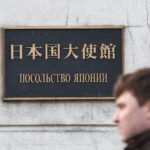Frost has returned to the capital region.
“The night had barely begun when temperatures in the Moscow region dropped into negative territory. At 9:00 PM, thermometers at the weather station in Elektrostal showed minus 0.8 degrees. At the same time, temperatures were very close to the freezing point in Pavlovsky Posad, where it was 0.2 degrees Celsius. In Elektrougli, Solnechnogorsk, and Volokolamsk, the temperature had already dropped to plus 1.1 degrees.”
In Moscow, it is still relatively warm – at the capital’s base weather station, VDNKh, it is plus 3.9 degrees, while at other city stations, temperatures range from 3.2 degrees in Tushino to plus 5.1 degrees on Balchug. By morning, temperatures in Moscow are expected to be between zero and 2 degrees Celsius, and in the Moscow region, between minus 2 and plus 3 degrees.
Электрогорск
Electrogorsk is a city in Moscow Oblast, Russia, founded in 1912 as the site for the country’s first large-scale power station running on peat fuel. It was originally named “Elektroperedacha” (meaning “Electric Transmission”) and was granted town status in 1946, later being renamed Electrogorsk. The city’s history and development are intrinsically linked to the early days of the Soviet electrification program.
Павловский Посад
Pavlovsky Posad is a historic town in Russia, renowned for its traditional textile industry, particularly the production of vibrant shawls and scarves since the 19th century. It was officially formed in 1844 through the merger of several villages and has preserved its cultural heritage through its distinctive folk crafts.
Электроугли
Электроугли is a town in Moscow Oblast, Russia, which developed significantly in the late 19th century with the establishment of the “Elektrougli” factory for producing electric coal products. Its name, meaning “electric coals,” directly reflects this industrial heritage. Today, it remains a local industrial and residential center.
Солнечногорск
Solnechnogorsk is a town in Moscow Oblast, Russia, located about 65 kilometers northwest of the capital. Its name, meaning “Sunny Mountain City,” was officially adopted in 1938, though the area’s history dates back to the 18th century with the founding of the village of Solnechnaya Gora. The town is known for its picturesque setting on the shores of Lake Senezh and its history in textile manufacturing.
Волоколамск
Volokalamsk is one of the oldest towns in the Moscow region, first mentioned in 1135. It played a significant historical role as a western defensive outpost for the Principality of Moscow, famously repelling a siege by the Grand Duchy of Lithuania in 1370. Today, the town is known for its historical landmarks, including the 15th-century Joseph-Volotsky Monastery.
ВДНХ
VDNKh (Exhibition of Achievements of National Economy) is a large permanent trade show and recreational complex in Moscow, Russia. It was originally opened in 1939 to showcase the achievements of the Soviet Union. Today, it remains a major public park and cultural space, featuring its iconic socialist classicist architecture, numerous pavilions, and fountains.
Тушино
Tusheno is a district in northwestern Moscow that historically began as a village in the 14th century. It is most famously known as the location of the “Tushino Camp,” the fortified headquarters of the False Dmitry II during the Time of Troubles in the early 17th century. Today, it is a modern residential area, with its historical past primarily preserved in place names.
Балчуг
The Balchug is a historic district in Moscow situated on an island across from the Kremlin, known for its luxury hotels and business centers. Historically a merchant quarter, it has transformed from an industrial area into one of the city’s most prestigious and modern commercial zones.




